Refine search
Actions for selected content:
67 results
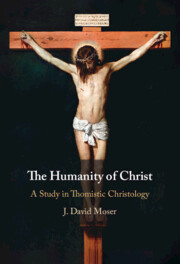
The Humanity of Christ as Instrument of Salvation
- A Study in Thomistic Christology
-
- Published online:
- 21 August 2025
- Print publication:
- 04 September 2025
6 - Sermons for Christmas and the New Year’s Feasts
- from Part II - Augustine’s Sermons on the Scriptures and Liturgical Feasts
-
-
- Book:
- The Cambridge Companion to Augustine's Sermons
- Published online:
- 26 May 2025
- Print publication:
- 12 June 2025, pp 116-132
-
- Chapter
- Export citation
12 - The Widow and the Unjust Judge (Lk 18:1–8) and the Pharisee and the Tax Collector (Lk 18:9–14)
-
- Book:
- Luke's Unique Parables
- Published online:
- 28 February 2025
- Print publication:
- 06 March 2025, pp 145-154
-
- Chapter
- Export citation
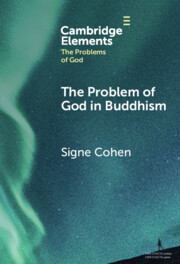
The Problem of God in Buddhism
-
- Published online:
- 17 February 2025
- Print publication:
- 13 March 2025
-
- Element
- Export citation
6 - Personal Salvation
- from Part II - Paul Tillich and Personal Salvation
-
- Book:
- Salvation in the Block Universe
- Published online:
- 09 January 2025
- Print publication:
- 23 January 2025, pp 184-206
-
- Chapter
- Export citation
Introduction
-
- Book:
- Salvation in the Block Universe
- Published online:
- 09 January 2025
- Print publication:
- 23 January 2025, pp 1-10
-
- Chapter
- Export citation
7 - Salvation and Transformation in the Block Universe
- from Part II - Paul Tillich and Personal Salvation
-
- Book:
- Salvation in the Block Universe
- Published online:
- 09 January 2025
- Print publication:
- 23 January 2025, pp 207-255
-
- Chapter
- Export citation
Conclusion
-
- Book:
- Salvation in the Block Universe
- Published online:
- 09 January 2025
- Print publication:
- 23 January 2025, pp 256-270
-
- Chapter
- Export citation
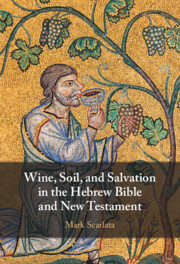
Wine, Soil, and Salvation in the Hebrew Bible and New Testament
-
- Published online:
- 09 January 2025
- Print publication:
- 23 January 2025
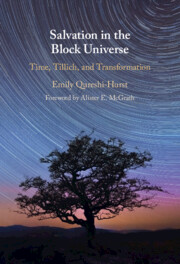
Salvation in the Block Universe
- Time, Tillich, and Transformation
-
- Published online:
- 09 January 2025
- Print publication:
- 23 January 2025
9 - Hinduism and Confucianism and the Question of Transcendence
- from Part III - Global Patterns
-
- Book:
- Converting Rulers
- Published online:
- 07 November 2024
- Print publication:
- 21 November 2024, pp 315-340
-
- Chapter
- Export citation
9 - The Eschatological Future of Artificial Intelligence
- from Part II - Social and Moral Issues
-
-
- Book:
- The Cambridge Companion to Religion and Artificial Intelligence
- Published online:
- 20 November 2024
- Print publication:
- 21 November 2024, pp 148-164
-
- Chapter
- Export citation
Commentator’s Conclusion: Preamble to What?
-
- Book:
- Commentary on Thomas Aquinas's Treatise on the One God
- Published online:
- 23 November 2024
- Print publication:
- 21 November 2024, pp 409-412
-
- Chapter
- Export citation
Salvation through Implicit Faith: A New Defence
-
- Journal:
- New Blackfriars / Volume 106 / Issue 2 / March 2025
- Published online by Cambridge University Press:
- 12 November 2024, pp. 114-129
- Print publication:
- March 2025
-
- Article
- Export citation
‘Divine deceit’ or the ‘devil's delusion’? Gregory of Nazianzus on Christ's defeat of the devil
-
- Journal:
- Scottish Journal of Theology / Volume 77 / Issue 3 / August 2024
- Published online by Cambridge University Press:
- 29 October 2024, pp. 211-223
- Print publication:
- August 2024
-
- Article
-
- You have access
- Open access
- HTML
- Export citation
6 - Is God an Arbitrary Tyrant?
- from Part II - Rival Conceptions of God and Goodness:
-
- Book:
- The Cambridge Platonists and Early Modern Philosophy
- Published online:
- 09 May 2024
- Print publication:
- 16 May 2024, pp 141-175
-
- Chapter
- Export citation
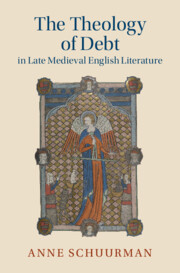
The Theology of Debt in Late Medieval English Literature
-
- Published online:
- 04 January 2024
- Print publication:
- 18 January 2024
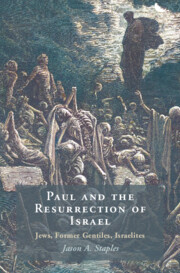
Paul and the Resurrection of Israel
- Jews, Former Gentiles, Israelites
-
- Published online:
- 02 November 2023
- Print publication:
- 23 November 2023
2 - Sensory Moral Economies
- from Part I - Perspectives and Precepts
-
- Book:
- Sensory Anthropology
- Published online:
- 02 March 2023
- Print publication:
- 09 March 2023, pp 53-76
-
- Chapter
- Export citation
8 - Conclusions
-
- Book:
- Sectarianism in Islam
- Published online:
- 10 November 2022
- Print publication:
- 24 November 2022, pp 185-191
-
- Chapter
- Export citation
